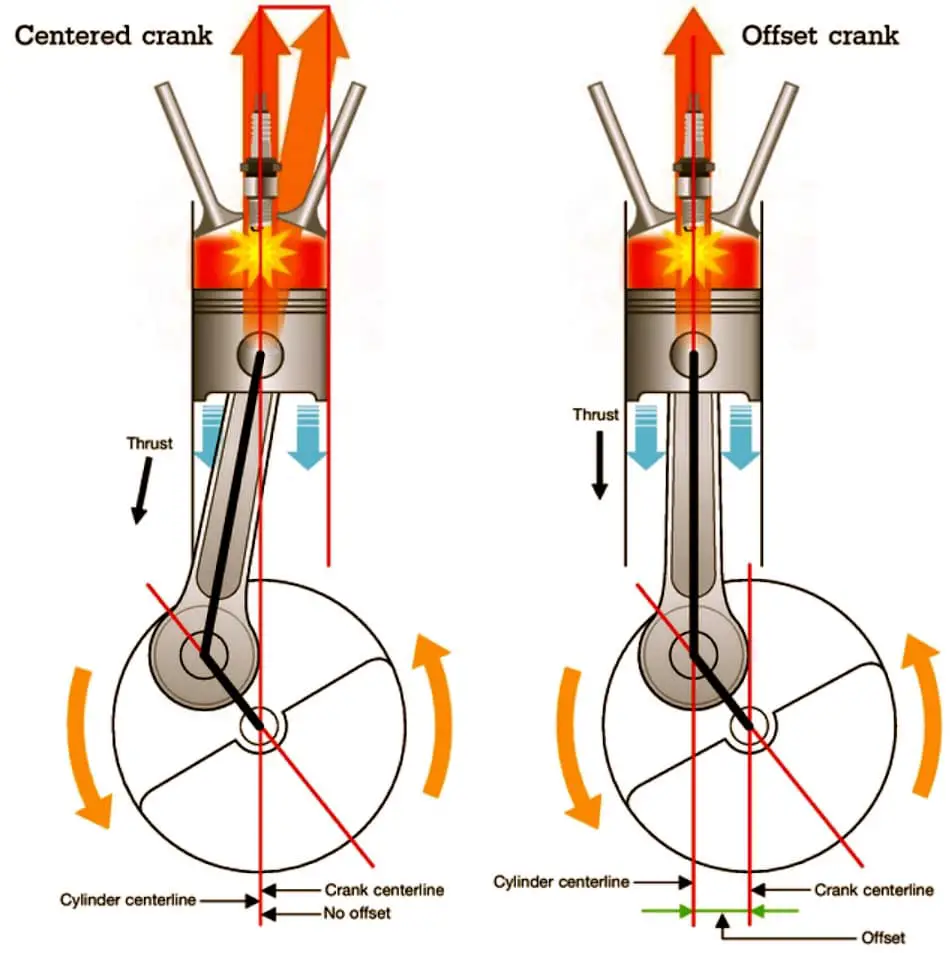ASK THE MXPERTS: THE WHYS AND WHEREFORES OF KAWASAKI CRANK OFFSET
 Kawasaki did not move the crank forward by 8.5mm in 2019 — it was already moved up.
Kawasaki did not move the crank forward by 8.5mm in 2019 — it was already moved up.
MOVING THE CRANK FORWARD
Dear MXA,
I saw that the 2019 Kawasaki KX450F now has 8.5mm of crank offset. Is this a new idea? What exactly does offsetting the crank do?
To say that the offset is a new idea would be slightly misleading, because the 2018 Kawasaki KX450F also had 8.5mm of offset. In most old-school engines, the piston tracks the centerline of the cylinder’s bore. It achieves this by being mounted directly in line with the center of the crank. In short, the center of the crankshaft, center of the crank pin, center of the wrist pin and center of the cylinder bore line up on a vertical axis at top-dead-center. In recent years, there has been a move to have the piston offset radially to the crank (perpendicular to the rotational axis). In most cases, the cylinder and piston are offset several millimeters towards the exhaust side of the cylinder.
The goal of offsetting cranks is to reduce friction, and friction is at its highest during the combustion stroke because that is when the piston is thrust into the side of the cylinder with the most force. The engine designer targets a specific rpm range, the one that he assumes riders use the most (for example, between 5000 rpm and 8000 rpm), and then chooses the number of millimeters of offset to match that target rpm range. If the piston is in line with the center of the crank (as on most older-model four-stroke engines), there is a moment during the stroke when the piston’s pin, big-end rod bearing, top-end bearing and crank center are aligned into a position of stalemate at top-dead-center. The alignment of all three bearing surfaces on a vertical axis is a momentary negation of leverage.
When the crank is offset by 4mm, 8mm, 10mm or 12mm, the three bearings are never aligned at top-dead-center. In a conventional four-stroke engine, each of the strokes (intake, compression, power, exhaust) involves a nominal rotation of 180 degrees, totaling 720 degrees for the complete four-stroke combustion cycle. An offset engine adds to the duration of the two downward strokes (intake and power) and subtracts the same amount from the two upward strokes (compression and exhaust), with the total remaining 720 degrees. A typical offset engine will have strokes of 185 degrees, 175 degrees, 185 degrees and 175 degrees, with the degrees as a percentage of offset distance to stroke length.
As a rule of thumb, less crank offset affects higher rpm ranges while more offset has its greatest effect at lower rpm. Thus, when Yamaha chose a 12mm offset for the YZ450F engine, the engineers were using test rider input and computer modeling to get the type of power they wanted. It should be noted that there is a point of diminishing returns—Yamaha chose 12mm, but that does not mean that 15mm would be even better—and, in fact, the Suzuki RM-Z450 uses 0mm crank offset. Additionally, offsetting the cranks seems to lessen decompression braking when the throttle is chopped.
Just so you know, Suzuki does not offset its cranks. Honda has a 4.5mm offset. KTM and Husqvarna use 5mm of offset. Kawasaki has 8.5mm of offset, and the Yamaha YZ450F offset is 12mm.






Comments are closed.